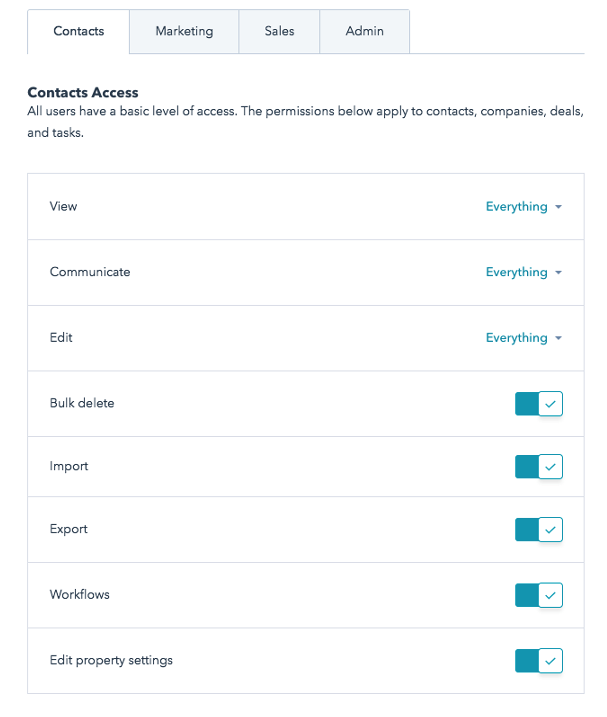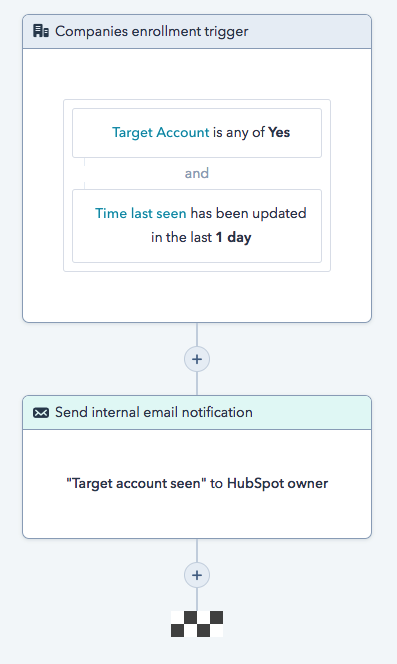Growing Pains
Candid Thoughts on HubSpot’s INBOUND18 Product Announcements
Now that I’ve had a while to digest, I thought I’d share my no-filter thoughts & reactions to HubSpot’s INBOUND18 product announcements. For the first time in many years, I wasn’t there in Boston’s sweltering September humidity. I was 200-ish miles south on I-95 in the New York humidity seeing two of my little ones off to their first days of school.
I caught Brian & Dharmesh’s keynote via live stream and Christopher O’Donnell’s product spotlight after the fact. I’ve read through all the release notes, help docs, and have played with most of the new features.
I won’t review every minor enhancement here, but I’ll cover all the big stuff for marketing and sales. If I skipped anything you wanted to get my thoughts on, please reach out in the comments.
Let me start with this: I don’t know exactly what HubSpot is in 2018.
It no longer feels like a company relentlessly determined to be the best B2B marketing platform in the world. A team hell-bent on outpacing Adobe (née Marketo), Pardot, Eloqua, and the new breed like Drift and Intercom.
HubSpot in 2018 feels like a three-headed monster eager to sink its teeth into any software market within arm’s reach of the marketing department, even if it means overlooking the needs and wants of its original marketing-only customers.
I got a bit queasy last year when HubSpot unveiled Service Hub, but I bit my tongue. I was half hoping it was the result of a drunken bet on whether or not they could put ZenDesk out of business. Surely the product team would sober-up after a fun little jaunt in help desk land and come back home to us marketers, right?
So, while HubSpot is ostensibly growing away from B2B marketing, its primary competitor Marketo (now part of Adobe) snatched up the best marketing attribution company on the planet in Bizible and partnered up with possibly the hottest B2B marketing startup on
2019 is going to be an
HubSpot Video
You can now directly upload videos and easily embed them throughout your HubSpot-hosted content–in blog posts, emails, landing pages, knowledgebase docs, and so on.
Calling this feature “HubSpot Video” is somewhat misleading in my opinion. It is a glorified Vidyard integration. Yes, it’s undoubtedly the most native video integration we’ve seen in HubSpot from a convenience perspective, but let’s be clear: you’re getting in bed with Vidyard.
Why should you care? THIS THING IS FREE, RIGHT?
No
How do I know this?

You won’t find these details in HubSpot’s blog post, or product page, or pricing page. I happened to dig up the pricing on Vidyard’s site, but it wasn’t easy to find.
It bothers me a bit that some of the features that were mentioned on stage and in the promotion of HubSpot Video–like automatic video transcription and in-video forms & CTAs–aren’t in the free tier because the announcement made it seem as if the whole thing is free until you hit 250 videos. 🤷🏻♂️
Will I use HubSpot Video? Not likely.
I, like thousands of marketers, have already integrated a video hosting platform with HubSpot (hey Wistia!). When I heard about HubSpot Video, instead of jumping for joy, I started sketching out a pro-con list and contemplating a potential migration headache.
Stay with Wistia? Switch to HubSpot? Migrate all my videos? What about my historical analytics? Will HubSpot make it harder to use Wistia to push people to Vidyard?
It’s a little frustrating. The video ship left the harbor years ago. And HubSpot nudged us towards their next-door neighbor, Wistia, which has worked out great.
Wistia is a fantastic video hosting platform, reasonably priced, and integrates deeply with HubSpot. And even though HubSpot Video emphasizes ad-hoc, personalized videos–that’s something that Wistia, with Soapbox, has been evangelizing for over a year.
I just hope they leave the Wistia integration alone. Using videos in HubSpot via Wistia has been so seamless and full-featured that I’m shocked HubSpot Video was something anyone was asking for.
So for me, I’m probably sticking with Wistia. For you? I’m not your dad, but here are some things to consider about the free tier of HubSpot Video:
1.) You can’t embed video outside of HubSpot
You can’t just grab a HubSpot video embed snippet and put it where you want like you can with Wistia, YouTube, or Vimeo. You also can’t grab a direct link to a video if you want to quickly share a video with someone without embedding it somewhere.
2.) CTAs within videos are local to the video embed instance
This means that if you have a video that you want to use in a few different places, and you want the same in-video CTA no matter where the video lives, you have to recreate them every time.
It’d be nice to define the default CTAs and forms at the video-level and then have the ability to override and customize at the embed-level.
3.) Video stats are local to the video embed instance
To my knowledge, you can’t see a video’s overall performance regardless of where it’s embedded. If you embed the same video on two different landing pages, you’ll see the video’s performance on each page’s performance tab. Maybe you can see this if you log into Vidyard, but I wouldn’t call that native.
An unfortunate side effect is that every HubSpot landing page now has two giant sections on the performance tab for “Video views” and “Video retention” even if there are no videos on the page. Hopefully the product team will hide these sections if they detect that no HubSpot Video exists on the page.

4.) There’s a 250 video limit
That number sounds like a lot, but if you have a big sales team that records lots of short 1:1 personalized video, you can hit that number shockingly fast.
All that said, if you’re starting fresh and are making a commitment to video for marketing and sales, you’re going to have to pay someone for premium features, so you should take a serious look at Vidyard. I haven’t used the product
Mastering HubSpot will definitely have a full lesson that breaks down Vidyard vs. Wistia, feature-by-feature. Stay tuned for that.
For more discussion on HubSpot video, I highly recommend listening to episode 193 of Hubcast with Carina Duffy.
Conversations
I’m a marketer. As you may have guessed, my team doesn’t intend to run customer service in HubSpot. So the fact that Conversations combines sales chat bots with customer support “team email” inbox functionality worries me a bit.
I’ve had access to Conversations for a long time now in my portal, and I’ve tested it quite a bit. Despite owning Conversations as part of my HubSpot subscription, I use Drift.
Here are some areas where I feel Drift has a big advantage:
- Complex display and routing rules based on URL, geo, firmographics, team availability, etc. This is critical for a company like mine with a highly segmented sales team.
- Easy-to-use and interpret visual builder that makes it very clear which response leads to which branch, action, or goal
- Integration with Clearbit for account-based targeting and better qualification
- Reporting is very clear in Drift making it easy to gauge the success, based on configurable goals, and report at the account level, per playbook, per team, or per person
- Salesforce integration to help tie conversations and meetings booked via Drift to deals
- Integration with Office 365 calendars without requiring that each user OAuth their calendar (which won’t work with a strict multi-factor authentication setup)
Many of these points will be complete non-issues for you, but the UX probably will be. I can’t really describe the difference in prose, so I’ll likely record a video explaining why Drift is more intuitive.
HubSpot CMS
The CMS (fka “COS” or Content Optimization System) isn’t new, but now you can buy it as a standalone product. Not sure how this made the cut as a big announcement for INBOUND18, but here we are.
I’ve written extensively about the pros and cons of hosting a site with HubSpot’s CMS and explained why I prefer not to use it. Those reasons still hold post INBOUND18, so I won’t rehash them here.
The announcement emphasizes the tight integration with the HubSpot CRM and the ability to create smart content that allows you to personalize your website’s messaging based on a person’s contact history.
Hasn’t this been around for a while now? Here’s a video from 2016 explaining how to use smart content to personalize your website, landing pages, CTAs, and emails based on the data in HubSpot.
I don’t want to minimize all the work that has gone into the CMS to make it faster, more secure, easier to work with, etc., but it bothers me when companies relaunch products like this and hope that customers are too naive to see it for what it is.
The other quibble I have is that, as part of my enterprise plan, I’ve always had the ability to create website pages, landing pages, and blog pages. No add-ons needed. Now, seemingly out of the blue, I have two add-ons: “Website Starter” and “HubSpot CMS.” I’m honestly not sure what the difference is between these two add-ons — their descriptions are nearly identical.
HubSpot’s pricing model is becoming convoluted (though still better than most!) and I think Dharmesh admitted to it on stage. It’s hard to tell where one module stops and another one starts these days. IMO, the enterprise plan should just include all the things.
Teams
You can now organize your HubSpot users into teams. This is pretty cool. It may not seem like much, but for a large company, it’s a pretty big deal. I like that enterprise plans allow for group hierarchy so I can do things like this:
- NAM Sales
- NAM – East
- NAM – West
- EMEA Sales
- DACH
- Continental Europe
Once you create teams, what can you do with them? For one, you can set someone’s permissions so that they see see all records (Contacts, Companies, Deals, Tasks, and Properties) that are owned by them or a teammate. This is very useful.
However, while HubSpot says:
Use Teams to control access to tools, limit visibility into your database, and easily segment or roll up custom reports.
I have not yet found a way to control access to tools at the team level. Every time I create a new user and add them to a team, they don’t automatically inherit their team’s permissions. I still have to set tool access individually for that user and I hope that I configured everything to match the access their teammates have.

Continuous optimization
Automated A/B testing seems fine for simple things like testing Lead Flow popup types or CTA button styles, but as anyone who has run a growth team will tell you–exponential growth usually requires forethought, hypotheses, structure, design, documentation.
I guess this is cool? I have to wonder: were customers asking for this? It frustrates me that this was developed at the expense of something like the ability to A/B test automated workflow emails.
Predictive lead scoring
I’ve had terrible luck with this feature in the past. Every time I rebuild my model it ends up adding negative factors which I KNOW are positive factors.
For example, our model says that NOT knowing someone’s phone number is the strongest predictor of lead quality, but having a valid phone phone number is the second strongest predictor of lead quality. :-/
The model also thinks Offline Sources is our worst lead source when it’s one of our best, and considers someone who is ineligible to receive marketing emails a really good thing.
The algorithm is a black box, so I can’t be sure about this, but I have hunch about why predictive lead scoring has sucked for my portal in particular: HubSpot’s predictive scoring takes a contact-centric view, not an account-centric one.
I believe HubSpot is looking at each contact and their journey from subscriber to customer (lifecycle stage-wise) in a vacuum. Because my business is enterprise B2B with long sales cycles and many stakeholders, it’s difficult to make lifecycle data across all contacts and companies reflective of reality, even with the lifecycle stage sync feature turned on.
I’d love to hear from anyone who is having success with this feature!
Company-based workflows
This is going to be useful for any business venturing down the account-based marketing (ABM) road. HubSpot has been eerily silent on ABM strategy, though Sales Hub certainly has ways to execute some very limit ABM tactics.
I’m not exactly sure how I’ll use Company-based workflows just yet. The feature is in beta, so I have time. Maybe the Academy has some ideas for me.
Here’s a silly one:

Send frequency cap
Right now I’m manually auditing contact records using reports to ensure we’re not over-emailing people. This sucks. We send two broadcast emails per month to contacts not in a specific workflow and, on rare occasions, contacts will end up in multiple cohorts and get four emails instead. The send frequency cap will come in handy here.
Where I can see this getting tricky, though, is if someone enrolls in an email course or product onboarding sequence where they expect to get an email a day for a week. For those people I don’t want the cap to apply. In fact, if the cap kicks in mid-email course, they could miss emails that they were expecting and that’d be a very poor user experience.
It’s great to have a safety net, I just wish it weren’t at the portal level.
All the rest
Some features which didn’t need a full write-up, but I’m pretty excited about:
- SSO
- Custom property search
- Relational imports
- Recurring revenue tracking
- Calculated properties
- Slack Integration
- Social permissions and approvals
- Multiple currencies
- Smart content reporting
- Playbooks
The features that are meh or head-scratching:
- Custom analytics filtering
- YouTube integration
- eSignatures
- Additional dashboards
- Membership-driven content
- Content partitioning
Things that I would have loved to see improved in 2018:
- Advanced multi-touch attribution reporting (they should’ve bought Bizible)
- Merging workflow branches
- A/B testing in automated emails
- Campaigns (what are they even?)
That’s all I’ve got. I hope this feedback is helpful.
Also, please remember that this review is based on how I feel HubSpot can or cannot help me meet my goals as a B2B marketer selling enterprise software.
Hats off to the HubSpot product teams. Nobody can deny how much work they put in each and every day.